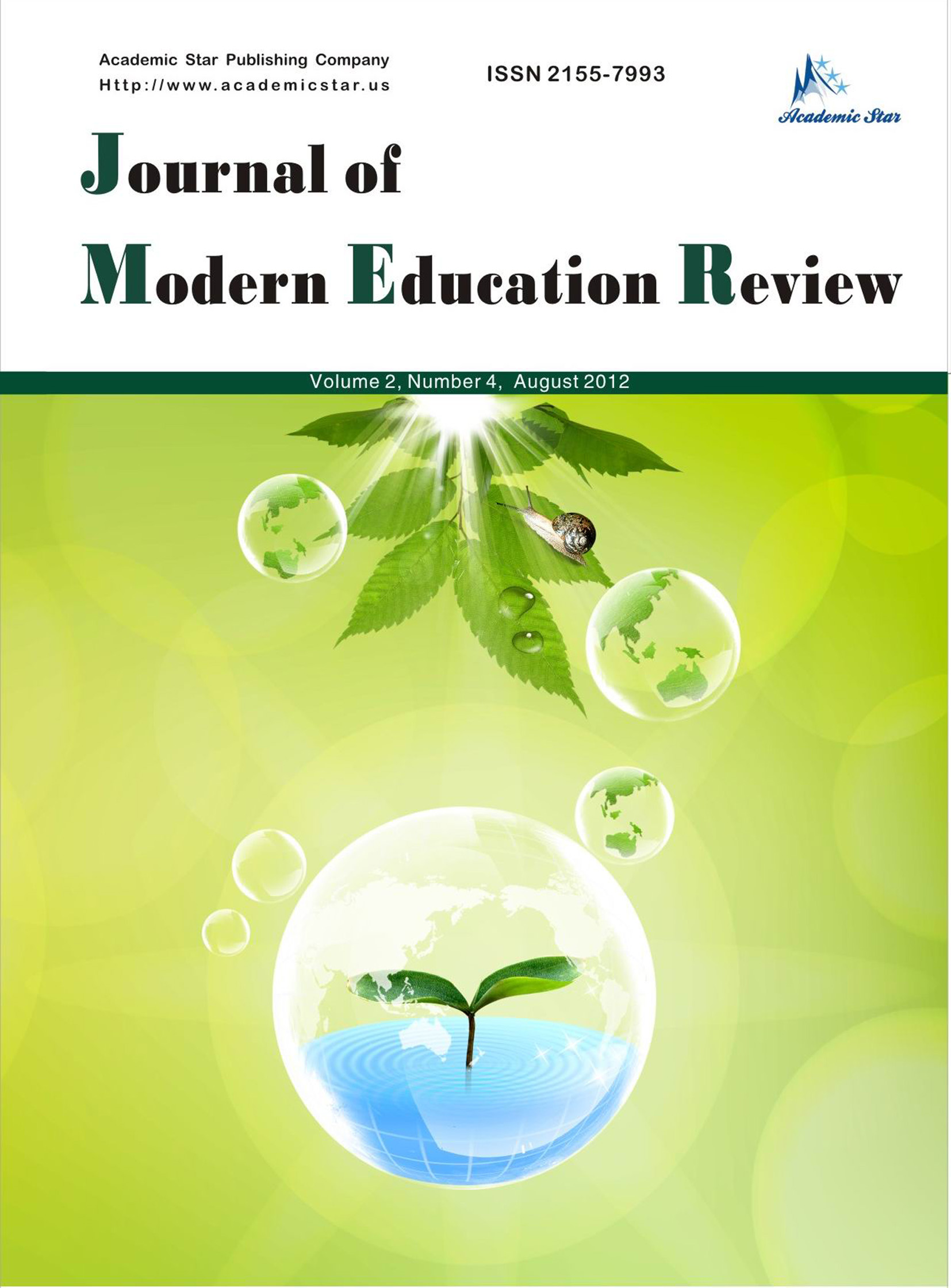Humanities

- ISSN: 2155-7993
- Journal of Modern Education Review
Strategic Environmental Assessment (SEA) Process for the Higher Education Institutions (HEIs) to Achieve Research and Academic Excellence*
Vijayan Gurumurthy Iyer
(Environmental Science and Engineering, Narasaraopeta Engineering College, India)
Abstract: Sustainable National Development (SND) is a kind of national development that meets the needs of the present without compromising the ability and efficacy of future generations to meet their own needs. Strategic environmental assessment (SEA) process can be defined as the systematic identification and evaluation of the potential impacts (effects) of proposed educational plans and programs by integrating environmental considerations prior to their implementation. SEA process that succeeds to SND. The objectives of the SEA process in higher education sector are to provide for environmental protection and to achieve sustainable
development by the integration of environmental and quality considerations into the educational projects, plans, policies, programmes and legislative actions. Environment and Quality Management (EQM) in Higher Education Institutions (HEIs) mitigates environment and quality impacts that succeeds to environment and quality education.EQM principles stimulate environment and quality education in HEIs for SND. Environmental Impact Assessment (EIA) process can be defined as the systematic study of the potential impacts (effects) of proposed projects, plans, programs, policies or legislative actions relative to the physical-chemical , biological, cultural, and socioeconomic components of the total environment. The primary purpose of the EIA process is to encourage the consideration of the environment in project planning and decision making (PPDM) process and to arrive at actions which are environmentally compatible. The legislation of EIA process was established in 1970 by the enactment of the National Environmental Policy Act (NEPA) in the USA. This was first time that EIA process became an official tool to protect the environment. Three of the significant terms while complying with the requirements of NEPA process are “environmental inventory”, “environmental impact assessment process”, and “environment impact statement”. PPDM process should include the integrated consideration of technical or engineering, economic, environmental, social and other factors. Prior to the NEPA process, technical and economic factors dominated the PPDM process. International organization for Standardization (ISO)’s 14000 and 9000 standards focus on EQM of all sorts of organizations apart from more than 19500 published standards. Environmental Management System (EMS) and Quality Management System (QMS) have been separately featured in ISO. The article highlights EQM for the HEIs to achieve research and academic excellence. Total Quality Management (TQM) can be broadly defined as a set of systematic activities carried by an institution to efficiently achieve institutional objectives that satisfies beneficiaries at the appropriate time and price. The definition of quality is “The totality of features and characteristics of products or services that bear on its ability, efficacy and values to satisfy a given or implied need”. TQM is a comprehensive and structured approach to an educational integrated
management that seeks to improve the quality of educational services through ongoing refinements in response to continuous feedback. Thus this standard definition of quality is applicable commonly to both products and services that is stated and unstated. TQM has an important role to play in addressing quality issues surrounding the higher educational development. Environmental Health Impact Assessment (EHIA) process is proposed for certain types of PPDM to consider the health impacts, such as nuclear power plants in order to study psychological and physiological effects on local residents. Social Impact Assessment (SIA) process can be defined as the systematic identification and evaluation of the potential social impacts of proposed projects, plans,
programs, or legislative actions so that social consideration is encouraged in PPDM process and to arrive at actions which are socially compatible. Strategic Environmental Assessment (SEA) process considers environment and sustainability impacts in PPDM process and arrive proposed projects, plans, programs, and legislative actions that are sustainably compatible. The EIA process study requires a multi-disciplinary approach and should be conducted very early stage of a project for environmental and sustainable feasibility. The objective of the study is to conceptualize SEA process on the basis of expert visits undertaken to twenty-five numbers of Higher Education Institutions (HLIs) during the research year 1999 to 2016. The design of the study is cross sectional. It is imperative that a policy decision may be taken to embed the multidisciplinary subject of Environmental Impact Assessment (EIA) Process in curriculum and syllabi of all the professional courses in HEIs. It is concluded that strategic environmental assessment process is a managerial approach for the HEIs upon consideration of environment and sustainability in to strategic decision making processes as the formulation of projects, plans, policies programs and legislative actions lead to economic improvement and sustainability.
Key words: education, embed, environment, strategy, sustainability






